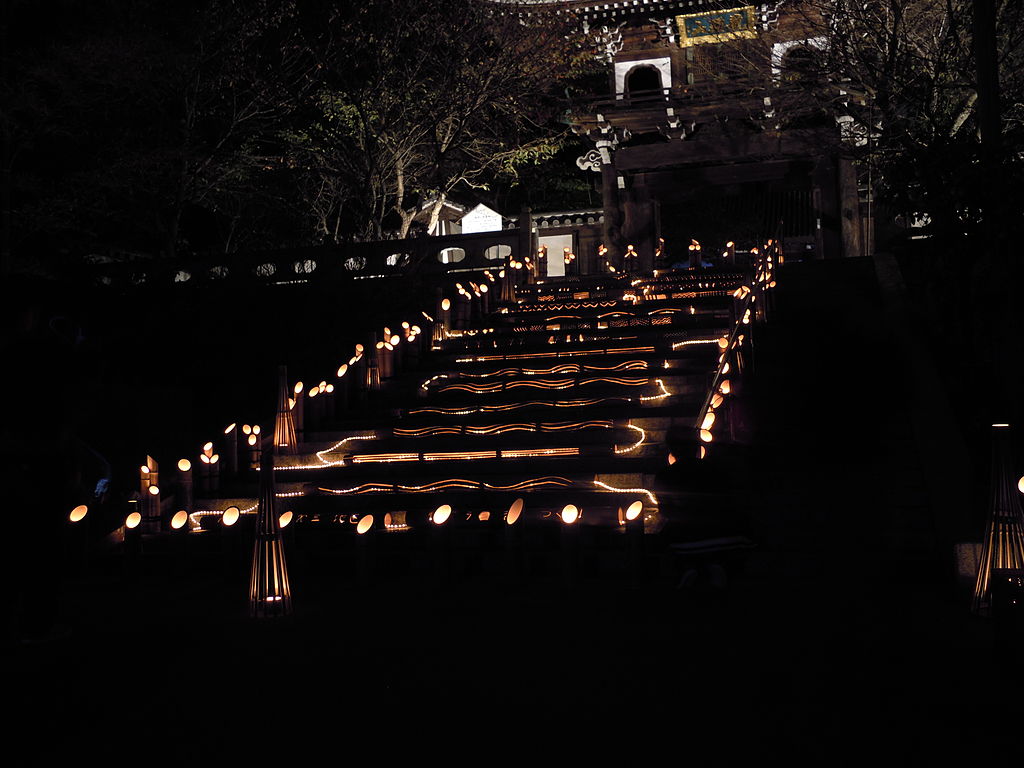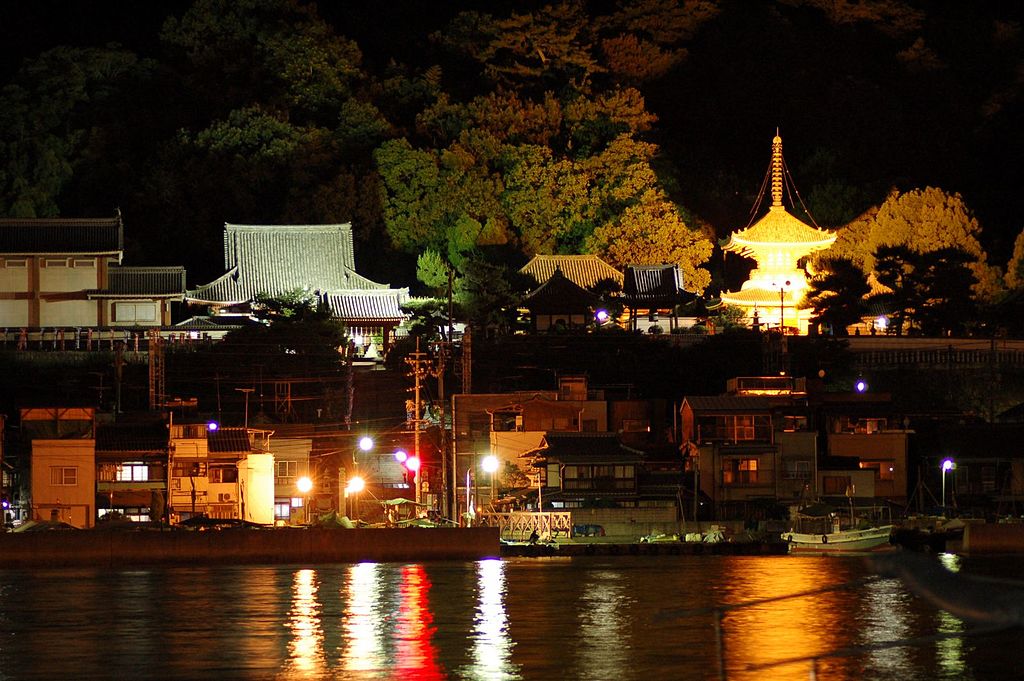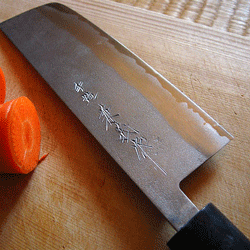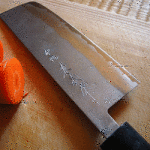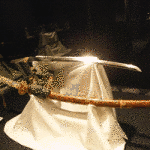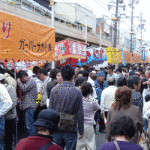Sep 27, 2018
The Shibuya Stream Complex

With its constant stream of people, iconic street crossing, and of course one of the most recognizable canine mascots in the world, Tokyo’s Shibuya district is known worldwide, if not always by name, it arguably best matches the foreign idea of Tokyo. Currently, in the middle of an ambitious building phase that started over 20 years ago, the entire Shibuya Station complex will be rebuilt entirely by 2027, bringing with it a more pedestrian friendly and connected feel to the area. As new spaces come online, they bring new places to eat, shop, and relax with them.
Located immediately south of Shibuya Station lies the new Shibuya Stream and Shibuya Bridge complex consisting of a 50 story tower clad in white asymmetric windows, a winding five-story building featuring a boutique collection of restaurants, hotel, and co-working spaces, and an outdoor plaza and atrium that weaves into a new promenade alongside the Shibuya River. The new area was created when Tokyu’s Toyoko rail line was placed underground in a tunnel, opening up the land to further use.
 Tokyu Corporation, which still owns the land and is one of Japan’s most prominent builders, decided to incorporate bits of the old train terminal’s iconography into the new spaces. For example, the pedestrian crossing over Route 246 sits where the Toyoko line’s three platforms and rails once sat. They even preserved the old rail itself into the sidewalk and labeled the areas where pylons carried the elevated line.
Tokyu Corporation, which still owns the land and is one of Japan’s most prominent builders, decided to incorporate bits of the old train terminal’s iconography into the new spaces. For example, the pedestrian crossing over Route 246 sits where the Toyoko line’s three platforms and rails once sat. They even preserved the old rail itself into the sidewalk and labeled the areas where pylons carried the elevated line.
Inside the building, the color scheme from the old station remains, but touches of modernity like a dancing LED and laser display were added into the mix. The street and atrium levels of the complex are home to many shops and restaurants, many returning to Shibuya (Dean and Deluca), are new to Shibuya itself (Lemonade Stand), or even brand new to Japan.
Of course, some shops are very familiar as well. Shibuya’s eighth Starbucks will open here… a 10-minute walk from 3 other locations. Yay caffeine!)
 The biggest attraction in the new complex has to be the Shibuya River walkway. The river itself is a concrete storm drainage canal, inaccessible to the public due to an elevated train bridge. Now there are spaces to sit and relax next to the river, and the new buildings facing this new pedestrian space house eateries, shops, and bars. In the plaza where the river emerges from underground, there is a large plaza. At the other end, there is a small park and the Shibuya Bridge building.
The biggest attraction in the new complex has to be the Shibuya River walkway. The river itself is a concrete storm drainage canal, inaccessible to the public due to an elevated train bridge. Now there are spaces to sit and relax next to the river, and the new buildings facing this new pedestrian space house eateries, shops, and bars. In the plaza where the river emerges from underground, there is a large plaza. At the other end, there is a small park and the Shibuya Bridge building.
 Shibuya Bridge is a low slung, long curve of a building that is built roughly outlining the old elevated rail structure itself. In addition to providing the last few hundred meters of walkway trail, it is home to the Mustard Hotel, a new boutique hotel concept.
Shibuya Bridge is a low slung, long curve of a building that is built roughly outlining the old elevated rail structure itself. In addition to providing the last few hundred meters of walkway trail, it is home to the Mustard Hotel, a new boutique hotel concept.
In addition there is a restaurant, co-working space, and a daycare facility. From this point, you can continue across a pedestrian bridge over the JR Yamanote Line tracks and into Log Road (another development in what used to be the Toyoko Line’s tracks) and into the Daikanyama and Naka-Meguro districts if you’re up for a little exercise.
Access:
Shibuya Stream is located immediately south of Shibuya Station and easily accessible from exit 16 of the underground levels or across Tamagawa-Dori on the pedestrian bridges.
— By Jason L. Gatewood
Images by Jason L. Gatewood, Own Work
Sep 27, 2018
Saijo Sake Festival in Higashi Hiroshima

In early October of every year, Hiroshima Prefecture’s Saijo town (part of Higashi-Hiroshima) lets its hair down for a massive, two-day block party.
One of Japan’s three premier sake-brewing locales, Saijo is proud of its history. About thirty kilometers east of Hiroshima City, the town’s brewing industry claims roots reaching back over three centuries. Today eight of the breweries are within walking distance of JR Saijo Station, in a picturesque district of black and white walls, where spindly brick chimneys stretch for the sky. Clustered along a remnant of the ancient Sanyo Highway, the area is also home to the National Research Institute of Brewing; giving Saijo some serious sake cred.
The sakes of Saijo are prized for their full, round taste, a soft, sweet profile that brings sake drinkers from around the world. Many of the breweries have become justly famous across Japan and, especially in recent years, more and more aficionados abroad are taking notice as well. In addition to its breweries, Saijo is also home to Hiroshima University, with a sizeable international student presence. Many of these students return home with both a degree and an appreciation of Japan’s national drink, which they’re only too eager to share.
Saijo’s Sake Festival is held on the Saturday and Sunday in October falling before the Health and Sports national holiday. In 2018, that will be October 6 and 7, the first weekend of the month. Around the main festival area, you’ll find parades, artisans displaying a variety of wares from their stalls set up along the main thoroughfares, and a variety of events happening at the breweries themselves. Of course, the main draw is the festival’s namesake itself, and people here aren’t shy about diving in head first. After you’ve toured the breweries and wandered the streets, head for the Sake Hiroba.
As you enter the main drinking area, the first thing you’ll see is throngs of imbibers lounging about eating and drinking. When you present your ticket (see additional info below), you’ll receive a souvenir cup and an invitation to drink all you like. There’s no chance whatsoever that you’ll be able to try everything; recent years have seen the number of sakes on offer here swell to around 1000 different varieties from all over Japan.
The main drinking area is an excellent chance to meet not only local Japanese but also overseas students and visitors who crowd into the Hiroba. Many people linger for hours, sipping leisurely and making new friends as, inevitably, the boundaries between groups are dissolved by the wonderful and heady rice wine. Kids are welcome too, of course, and they’ll form their own bonds as the adults around them get progressively sillier.
In 2018, because of the flooding the area experienced in July, some of the venues are in different locations than in previous years, but the festival planners have worked round the clock to make sure that the festival comes off. If you’re ever going to go, this is the year when they could most use the support.
All in all, an enjoyable day out. Just don’t expect to get very much done the following day, especially if you’re not used to sake. It’s sweet and eminently drinkable, and it will sneak up on you fast if you’re not careful. Enjoy.
Saijo Sake Festival Information 2018
Location: In the streets around JR Saijo Station, in Saijo, Higashihiroshima.
Time: Saturday, October 6 and Sunday, October 7. All day.
Access: Public transportation is the best. Easiest access is by JR Sanyo Honsen line. Approximately 40 minutes from Hiroshima Station. Basic Fare: 580 yen.
Admission: Many events are free. Admission to the Sake Hiroba is 2100 yen if purchased on the day of attendance, or 1600 yen if purchased in advance. Advance tickets can be purchased until October 5 at Lawson Convenience Stores (L code: 62807) and 7-11.
Telephone: +81-(0)82-420-0330
Website: (Japanese) https://sakematsuri.com/
By Sharat Chowdhury [CC BY-SA 4.0 ], from Wikimedia Commons
Sep 26, 2018
Tokyo Oktoberfest 2018
We’ve said it before, and we’ll say it again: Japan loves beer. So it’s no surprise there’s an Oktoberfest festival happening somewhere at any point in the year. But what about actually IN October? Well, yeah, we got those covered.
Greater Tokyo is awash in the amber goodness throughout the beginning of autumn, and here’s a guide to get you started on where you can down all the lager, ale and pilsner brews you can think of this season.
Odaiba Oktoberfest 2018

Literally over the Rainbow (Bridge that is) lies Odaiba, home to many amusement, exhibition, shopping, and dining venues. So it should come as no surprise one of the longest-running Oktoberfest events has been here for many years. Over the course of one week and book-ended by two weekends, you can sample beers from 9 different stands, and stuff yourself full of sausage and kraut while your ears are treated to the tunes of German neo-folk band Almpower, straight from Munich.
Times:
Sep 28, 2018~Oct 8, 2018
M~F 5:30pm~10:00pm
Sat,Sun,Holiday 11:00am~10:00pm
Place:
Symbol Promenade Park, Central Square
Transport:
Yurikamome Line, Daiba Station [U07]
Rinkai Line, Tokyo Teleport Station [R04]
Web:
https://www.oktober-fest.jp/odaiba/
Oedo Beer Festival 2018
If you’re looking for some local flavors in the literal sense, then head on over to the Konan District just east of Shinagawa Station during the first week of October, and you’ll be able to check out beers from Devil Craft, Hitachino, Yakurai, Rokko and more. Plus it’s literally across the water from the other festival above so maybe you can pull a 2-for-1? Sure you can.
Times:
Oct 4~8, 2018
Thu 3:00pm~10:00pm
Fri 4:00pm~10:00pm
Sat,Sun 11:00am~10:00pm
Mon 11:00am~8:00pm
Place:
Shinagawa Intercity Hall area
Transport:
JR, Keikyu Lines, Shinagawa Station]
Web:
http://oedo-beer-festival.jp/
Yokohama Oktoberfest 2018
You say you want to not only drink German beer but have a bit of German scenery as well, huh? Well, we can accommodate you, but you’ll need to head 30 minutes south from central Tokyo to Japan’s Second City, Yokohama. It’s home to the Red Brick Warehouse, a historical landmark built by German architects in the first part of the last century as a vast storehouse for nearby ports.
Nowadays it hosts shops, eateries and outdoor concerts and festivals including Yokohama’s own Oktoberfest. Being the 15th anniversary, they are inviting all residents of Yokohama in for free on Wednesday, October 3rd, so remember to tote some ID if this fits your profile!
Times:
Sep 28, 2018 – Oct 14, 2018
M~F Noon~9:30pm (Except Fri 9/28; 3pm start.)
Sat,Sun, Holidays 11:00am~9:30pm
Place:
Yokohama Red Brick Warehouse
Transport:
Minato-Mirai Line, Nihon Odori Station [MM05]
Web:
http://oedo-beer-festival.jp/
– By Jason L. Gatewood
Twitter: @oktoberfest1810
“Kanpai” (CC BY-NC-ND 2.0) by HAMACHI!
Sep 26, 2018
Tackling Tokyo on Two Wheels
As sure as you’ll find vending machines, convenience stores, and a small shrine in the average Japanese neighborhood, you’ll find people traveling around on a bicycle. More everyday transport than pleasure, most Japanese use their bikes to run errands, ferry children to daycare, and get to and from their local train stations in the suburban areas where public transport links are more spread out.
Because they form a necessary part of the transportation infrastructure, cycling laws are enforced just as strictly as automobile laws; drunk cycling is punishable with similar fines and jail time, you may only park your cycle in designated areas, and in most places, the bicycle must be registered with the local police and carry a sticker with its registration number.
Getting Started
The easiest way to take care of everything at once is to buy a bike at a shop, and as you might guess, they are located everywhere from inside department stores all the way down to local mom & pop outlets. When you purchase a bike at the shop, the maintenance, registration and optional insurance can be taken care of straight away.
If you decide to purchase a used bike (and there are lots of deals to be had this way) remember to have the previous owner cancel their cycle registration with the local police so you may be able to re-register under your name. Many an expat has had to spend time explaining to the cops why they are the rightful owner of a 10-year-old mama-chari (bicycle) because they didn’t do this part.
Is insurance needed?
While not usually necessary (exceptions include Osaka City and Nagoya City), certain conditions may make it required. For example, some apartment buildings and long-term parking areas may require a copy of your insurance certificate. If you’ll be cycling to work, your employer may also make it a necessity.
In any case, it is advisable to purchase cycling insurance if you will be a regular rider to protect against injury and property damage. Purchasing insurance is simple enough; pop into almost any convenience store and ask the staff at the register for bicycle insurance information (jitensha hoken no jouhou 自転車保険の情報).
More Info on Insurance: http://japaninfoswap.com/bicycle-liability-insurance/
Keeping Safe

The rules to cycling are pretty much the same as anywhere else; when riding in the street, keep left with slower traffic. On sidewalks, and wherever pedestrians are walking, no excessive speeding. By law, you must have a bell and headlamp for night riding. Also, no passengers while riding are allowed (though you’ll see this sporadically.]
You’ll likely notice the lack of helmeted riders in Japan because there is no law requiring their use. It’s still a good idea, of course. Parking your bike can vary from place to place; in small neighborhoods, you can park on the side of the road or sidewalk, but in busier ones, you should seek out designated zones, parking areas, and even automated bike lockers.
Definitely do not leave your bike parked in front of any train station… unless you like solving the mystery of what company took your bike and learning how to recover it! Speaking of parking, you’ll note that most Japanese do not chain their bikes to trees, light poles or other street fixtures; locking it down in place is good enough.
More info on Rules of the Road: http://japaninfoswap.com/bicycle-japan-know-the-laws/
 While Tokyo and other major cities are adding bike lanes and pathways to the streetscapes, in many places you’ll be riding in mixed traffic or on sidewalks. In any case, I’ve found using Google Maps to find bicycle specific routes has been the best way to ensure I’m not on roads that are difficult to share with cars or pedestrians. The routes given also tend to be more level and cut out the steep inclines, making sure I arrive at my destination without looking like I rode the Tour de France.
While Tokyo and other major cities are adding bike lanes and pathways to the streetscapes, in many places you’ll be riding in mixed traffic or on sidewalks. In any case, I’ve found using Google Maps to find bicycle specific routes has been the best way to ensure I’m not on roads that are difficult to share with cars or pedestrians. The routes given also tend to be more level and cut out the steep inclines, making sure I arrive at my destination without looking like I rode the Tour de France.
Towards a bike-able Tokyo
From the hardcore sport cyclist, down to the average Joe making a grocery run, Tokyo can be navigated on two human-powered wheels. Here are some resources and guides that may aid you in the quest to become totally savvy in this realm:
https://www.mapmyride.com/jp/tokyo-tokyo/
http://cycle-tokyo.cycling.jp/
— By Jason L. Gatewood
Image: Sport 9s, http://avellocycle.com
Image: Screenshot, http://jitensya.ehokenstore.com
Image: “Tokyo cycling” (CC BY 2.0) by Ikusuki
Sep 26, 2018
Takehara Shokei-no-michi Candle Festival near Hiroshima

If you missed the Onomichi Lantern Festival on the 13th, or you were blown away by it and wanted more, the Takehara Shokei-no-michi Candle Festival may be just what you’re seeking. These autumn lantern and candle festivals are increasingly popular around western Japan since they’re such an excellent way to show off a town’s historic beauty while also extending the practical hours of tourism. And they’re a lot of fun.
Takehara is about 90 minutes east of Hiroshima City on the JR Kure Line. If you intend to spend some time in Hiroshima prefecture, Takehara is worth a day trip. Extending along the Honkawa River, the town’s history still shows in the excellent collection of older buildings concentrated in the eastern part of the city.
In the 17th century, locals began trying to reclaim land along the east bank of the river for farming. Although they were successful, the new land proved to be too salty for cultivation. Undaunted, the town converted the area to salt pans, and Takehara began to enjoy prosperity far more significant than would have been afforded by agriculture. Wealth from the salt industry allowed the rise of famous merchant scholars, including the great Confucian historian and poet Rai San’yo.
Today, the streets of Takehara are well known for their many fine historical merchants’ and scholars’ homes, with tiled roofs and white walls. There are also old breweries and their wells, and several interesting museums devoted to local history and craft traditions. A little farther to the east, visitors can take a pleasant stroll among the many old Buddhist temples dotting the mountainside.
At the Take no Yakata (House of Bamboo), a bamboo ecology garden about ten minutes car ride from the Station, visitors will even find an enormous pipe organ with pipes made from sections of bamboo. Where else will you ever see that?
The Candle Festival will take place on the evenings of Saturday, October 27 and Sunday, October 28 2018. Admission is free, and as you wander the old streets illuminated by the flickering light of hundreds of candles arranged artfully in bamboo holders, a magic takes over. Some of the old houses are open and illuminated by candlelight, and at several points, shamisen performances are accompanied by traditional dancers. There are also jazz performances and demonstrations of instruments constructed from the ubiquitous bamboo. And of course, there is sake to be drunk and “taketori” (grilled chicken with marinated bamboo shoots) to be had. It’s all quite pleasant, and well worth the trip.
Takehara Shokei-no-michi Candle Festival Information
Location: Takehara Historic Preservation district
Time: Saturday, October 27 and Sunday, October 28. You can show up any time, of course, but the festival proper kicks off from 17:00 and finishes at 21:00
Access: JR Kure Line to Takehara Station, then a very pleasant 15-minute walk. Basic Fare is 1180 yen.
Admission: Free
Telephone: +81-0846-22-7745
Website: (Japanese) https://www.takeharakankou.jp/event/9842
By Qiuqizhenghong [CC BY-SA 3.0 ], from Wikimedia Commons
Sep 26, 2018
Onomichi Lantern Festival Near Hiroshima

Onomichi’s Lantern Festival (Onomichi Akari Matsuri) makes for a perfect way to see this jewel of a small city and its historic temple district. Some 30,000 paper lanterns light the way along a path which carries you past some of the town’s best sights, laid out (according to the website) along the principles of Feng Shui.
Wedged between the island-studded Seto Inland Sea and the steep, forested hills rising from the coast, the little town of Onomichi is one of Hiroshima Prefecture’s genuine treasures. The fact that most of it can be seen in a day makes it a perfect day trip for visitors to the area, or a stopover for those passing through.
A port town, a tourist destination, a temple center; Onomichi has been all of these for most of its history. Envoy ships left here for China in ancient times, and goods from across Japan flowed in and out of the port with the regularity of the tides. Because of the trade, the town was wealthy from its earliest period, and many of the merchants repaid their good fortune by erecting temples on the hillsides. Today, the enjoyable temple walk leads visitors past 25 temples, belonging to a variety of Buddhist sects.
Onomichi’s nickname is the “Town on the Slope,” and you’ll see why immediately. Most of the older portion of the town clings to the face of a steep slope rising from the harbor. Many of the streets here obviously predate the automobile, and the narrow, tree-shaded lanes that wind among the old houses and temples are a paradise for walkers. Part of the fun is the sense of getting lost in the maze of steep alleys and pathways, some of them cobbled, but always being able to spot the harbor below or a landmark temple.
If that sounds too strenuous, there’s also a ropeway which will carry you to Senkoji Park at the top of the hill in about three minutes. The view from the ropeway is fantastic, and it takes you right over the rooftops of several temples, making it feel as if you’re flying up the hill. From the top, you can stroll back downhill through the park, which has thousands of cherry trees, and the “Literary Path,” which offers stunning views of the Inland Sea and stones carved with passages from some of Japan’s most famous authors. You’ll clamber down past Senkoji Temple, and the weathered pagoda of Tenneiji Temple before eventually tumbling back out onto the streets below.
As the sun sets, the Lantern Festival begins. Onomichi’s Lantern Festival is meant, among other things, to invoke the lights once set blazing on the town’s foreshore to guide ships in and out of the harbor. Intensely atmospheric, one of the highlights of the festival are the treasures brought out by some of the temples for viewing, normally hidden carefully away. Elsewhere, live music is performed, and of course, there’s lots to eat. In addition to everything else mentioned above, this is a great town for food.
Onomichi Lantern Festival Information
Location: Throughout downtown Onomichi, but principally centered on the Onomichi Sanzan Route.
Time: Saturday, October 13. 18:00 to 21:00. Postponed until Sunday, October 14 in the event of rain.
Access: At the moment, the best access is by train. The JR Sanyo Shinkansen “Kodama” will get you to Shin-Onomichi Station in about 40 minutes. The fare is 1490 yen. From Shin-Onomichi, a ten minute taxi ride will take you to the waterfront. There are also local trains, running about 90 minutes from Hiroshima Station to Onomichi Station, right on the waterfront.
However, due to recent floods, local service is suspended as of the time of writing; October 2018
Admission: Free
Website: (Japanese) http://www.onomichi-matsuri.jp/akari-matsuri/
たかはし くにお [CC BY 3.0 ], via Wikimedia Commons
Sep 26, 2018
Seki Cutlery Festival in Gifu

Seki is a small city in the center of Japan, located in the northern Mino region of Gifu Prefecture. Seki is famous for the production of blades; first samurai swords and now kitchen knives and cutlery continue a legacy of production by artisan swordsmiths in Seki City using modern and traditional forging styles that have been passed down for centuries. Today, the Seki name is globally recognized as a signal of quality production, and knives forged there are in high demand.
According to legend, Seki has forged fine blades since a master sword-maker by the name of Motoshige in the 13th century discovered the ideal conditions there for tempering steel: high-quality ore, pine charcoal, and an abundance of pure water.
Today, Seki is considered the home of modern Japanese kitchen cutlery, a place where state-of-the-art manufacturing and technology has built upon an ancient tradition of forging skills to produce a world-class series of stainless and laminated steel kitchen knives that sought after worldwide.
You can experience the knives and swords, as well as the traditions that surround them at this festival, hosted by the Seki Cutlery Association, the Seki Swordsmith Museum, the Seki Outdoor Knife Show, the October Cutlery Festival, and the Cutlery Hall where visitors can purchase a Seki knife of their very own.
Seki Cutlery Festival
 The Seki Cutlery Festival celebrates the modern cutlery industry of Seki, and 700 years of traditional sword making culture in the city. At the festival you will find stall after stall selling high-quality Seki knives at discount prices, sword forging and polishing demonstrations, sword cutting and unsheathing demonstrations, and much more.
The Seki Cutlery Festival celebrates the modern cutlery industry of Seki, and 700 years of traditional sword making culture in the city. At the festival you will find stall after stall selling high-quality Seki knives at discount prices, sword forging and polishing demonstrations, sword cutting and unsheathing demonstrations, and much more.
This symbolic festival is held at Honmachi and other places in Seki City on the second Saturday and Sunday of October annually.
- 0575-22-3131 Seki Sightseeing Association
- Honmachi Area of Seki City (map)
- About 10 minutes walk from Seki Station (Nagaragawa Railway)
Seki Cutlery Festival 2018
October 6 sat.- 7 sun 2018
www.seki-hamono.jp
Seki Cutlery Hall
At the  Seki Cutlery Hall knives and other cutlery produced in Seki are exhibited and sold. As many as 2,000 pieces of cutlery including cooking knives, knives, scissors, and nail clippers are on sale for 70 to 80% of market prices.
Seki Cutlery Hall knives and other cutlery produced in Seki are exhibited and sold. As many as 2,000 pieces of cutlery including cooking knives, knives, scissors, and nail clippers are on sale for 70 to 80% of market prices.
- 4-6 Heiwa-dori, Seki City, Gifu
- 0575-22-4941
- Located near Hamono-kaikanmae Station (Nagaragawa Railway)
The Seki Sword Tradition Museum
 The Seki Sword Tradition Museum shows off the city’s 700 years of history of using traditional forging styles to create blades that border on art. Documents and videos are always on display for visitors to see, but the highlight is catching a glimpse of traditional Japanese sword forging in action.
The Seki Sword Tradition Museum shows off the city’s 700 years of history of using traditional forging styles to create blades that border on art. Documents and videos are always on display for visitors to see, but the highlight is catching a glimpse of traditional Japanese sword forging in action.
On specific dates, you can see a live demonstration of traditional forging practices in which sword smiths in traditional white attire pound the raw steel with giant hammers; sending out flurries of sparks and heat. Notably, every January 2nd is the Uchizome-shiki, a ceremony marking the first forging of the year.
- 9-1 Minamikasuga-cho, Seki City, Gifu Prefecture (map)
- 0575-23-3825
- A 5-minute walk from the Nagaragawa Railway Hamono Kaikanmae Station






